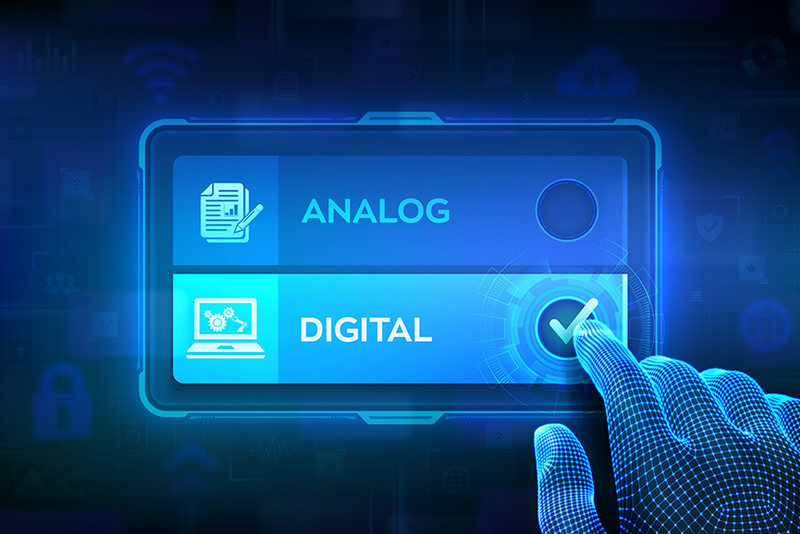
Analog and digital signals are two ways to represent and transmit information. Understanding the difference between these two forms of signals is important in today's world as the majority of communication and data transfer happens digitally. In this blog, we will delve deeper into the difference between analog and digital signals, the advantages and disadvantages of each type, and the impact of this difference on various fields such as technology, telecommunications, and entertainment.
Analog signals are continuous signals that vary in amplitude and frequency over time. They are often used to transmit information such as sound and images, as they can easily represent continuous data. For example, an analog signal can be used to transmit a radio station's broadcast over the airwaves. The radio signal is a continuous wave that changes in amplitude and frequency over time to represent the sound of the music or voice. The analog signal can be transmitted in a variety of ways such as through radio waves, coaxial cables, or optical fibers.
Digital signals, on the other hand, represent information as binary code. This means that the signal is composed of a series of 0s and 1s, which represent on and off states. Digital signals are used to transmit information in a compact, standardized form that can be easily processed by computers and other digital devices. For example, digital signals are used to transmit information over the Internet, as they can be transmitted more accurately and efficiently than analog signals.
One of the biggest advantages of digital signals over analog signals is that they are less susceptible to interference and noise. This is because digital signals are transformed into a binary code before being transmitted, which means that any interference or noise that occurs during transmission can be easily corrected. This allows digital signals to maintain their accuracy and quality even over long distances. Additionally, digital signals can be compressed and stored more efficiently than analog signals, leading to a reduction in the amount of storage space required.
Analog signals, on the other hand, are often considered to be more natural and lifelike in their representation of information. This is because they are able to accurately represent the continuous nature of data such as sound and images. For example, analog recordings of music or film are often considered to be of higher quality than their digital counterparts because they are able to accurately represent the nuances and subtleties of the original source material.
The transition from analog to digital has had a significant impact on various industries. In the telecommunications industry, for example, the shift from analog to digital signals has allowed for the creation of new technologies such as digital telephones and high-speed internet. Additionally, the increased efficiency and accuracy of digital signals has allowed for the growth of new industries such as e-commerce and cloud computing.
In the entertainment industry, the shift from analog to digital has also had a major impact. For example, the transition from analog to digital television broadcasting has allowed for the creation of new types of content such as high-definition television and interactive television services. Additionally, the increased efficiency and accuracy of digital signals has allowed for the growth of new forms of entertainment such as online gaming and video streaming.
The transition from analog to digital has also had a significant impact on the technology industry. Because these digital signals can stored as compact electronic files, they can be reproduced, managed, and shared so much easier than analog signals. Using the high speed of the globally connected internet, a single digital file can be transferred to an unlimited number of recipients at one time. Every day, billions of images are captured on digital devices, saved as JPEG, PNG, or TIFF files, and move around the internet at the speed of light.
The increased efficiency and accuracy of digital signals has allowed for the creation of new types of digital devices such as smartphones, laptops, and tablet computers. From these devices, the global economy can better communicate digitally. The compact and standardized nature of digital signals has also allowed for the rapid communication of audio saved as MP3, documents savers as PDF files, and video saved as portable MP4 files.
It is important to note that while the transition from analog to digital has been dramatically positive, there are some challenges associated with the shift as well. For example, some people have expressed concern about the loss of quality that can occur during the digitalization of analog content such as music and film. Additionally, the increasing reliance on digital technology has led to concerns about privacy, as personal data is mismanaged or manipulated by digital platforms more interested in rapid growth than in safeguarding consumer information.
Select a box to get started.
Pack whatever fits... we'll sort it all.
Simply pay unit digitizing prices.
















